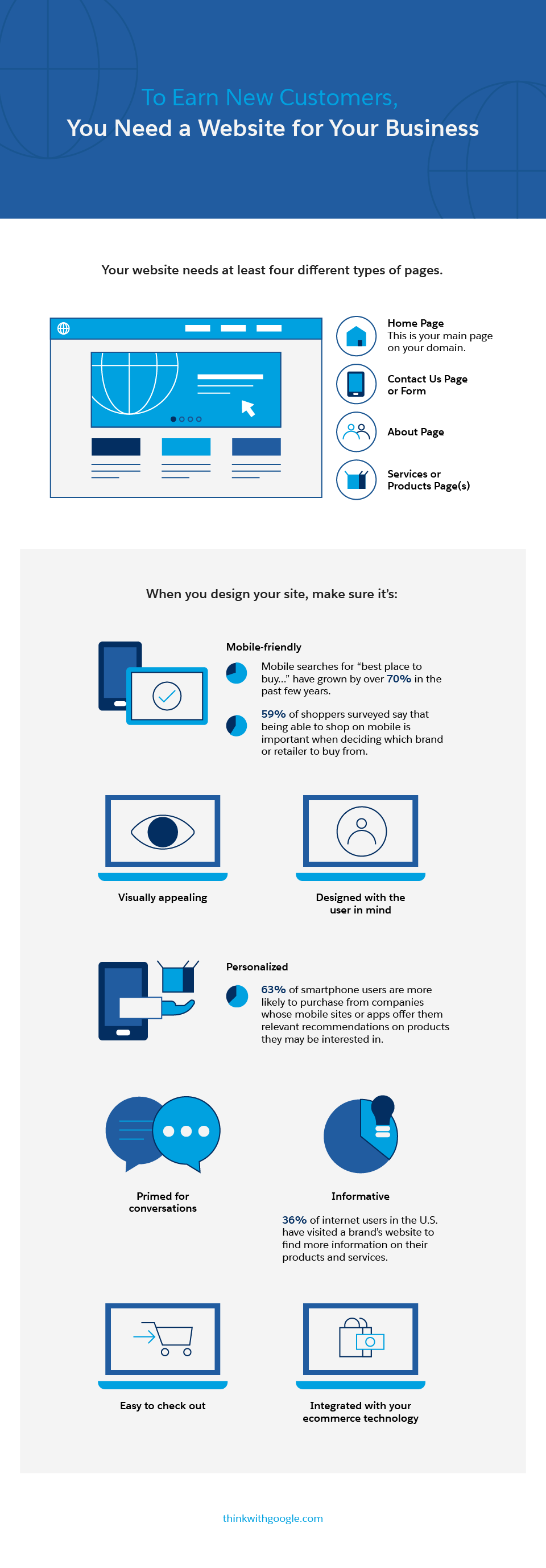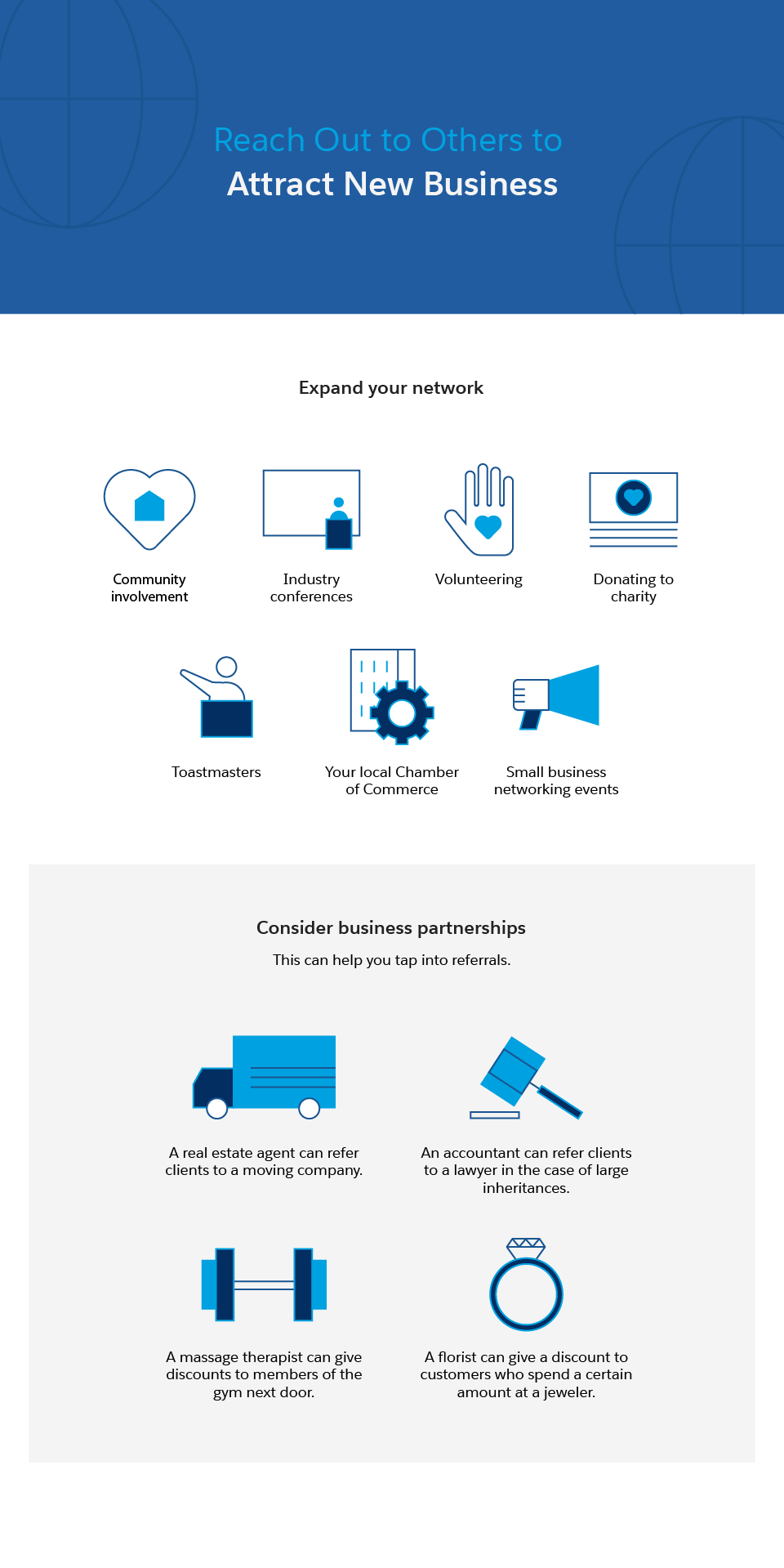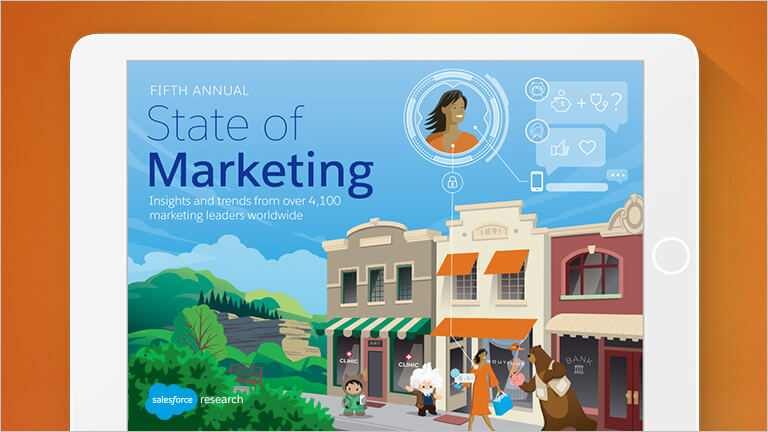How to Attract Customers to Your Small Business
Try these strategies to attract new customers to your small business.
According to the Office of Advocacy at the U.S. Small Business Administration, there are 31.7 million small businesses in the country, making up 99.99% of all businesses and employing 47.1% of all U.S. employees.
These figures show that small businesses are common in the United States and make up a healthy portion of the economy. While small businesses can be very different, they all face the same challenge: getting new clients in the door in order to grow or sustain their business.
Luckily, small business owners can reach leads and new customers in a variety of ways. Five ways to attract customers to your business include:
An optimized website and online presence
Balanced online reviews
Online advertising
An extensive network
Partnerships with other businesses
Each method will help business owners as long as they focus on the benefits of their products or services and think of ways to build beneficial relationships. With that in mind, here’s how you can bring in new customers.

An Optimized Website and Online Presence
An online presence in the form of a website is a must-have for the vast majority of small businesses. In fact, 60% of customers visit a small business’s website for information such as business hours. You have two main options when it comes to your website: build one yourself or hire a professional to create one for you.
Many online tools allow you to build a basic, optimized, easy-to-use website that you don't have to pay thousands of dollars to have designed or to maintain. However, if you do need advanced features beyond an About page, a Contact page, and a few other simple pages, it may be worthwhile to hire a professional website builder.
Every small business website should have at least four types of pages:
Home Page: This page is on the main website address. It should show your hours, address, phone number, other contact information, and a description of what you offer. This page may be a lead’s first interaction with your company, so it needs to be good.
Contact Us Form or Page: This page gives visitors information about how to contact your business and find you online and in person. It may include a lead generation form that visitors can fill out to initiate contact with you.
About Page: This page can include company history, employee information, and any pertinent facts about the business a customer would want to know, such as licensing and insurance information, awards, and legal disclaimers.
Services or Products Page: On this page, you list what you offer. For more detailed websites, the products or services could be broken down into separate pages. Companies that need an ecommerce website can either build their own or get some professional help if they don’t feel confident building the pages themselves, but their site needs to integrate with their ecommerce platform and tools to work as smoothly as possible.
All of these pages should be in the navigation bar, which many website builders do automatically. Your website must also be optimized for search engines and for mobile traffic. After all, according to Google Research, “59% of shoppers surveyed say that being able to shop on mobile is important when deciding which brand or retailer to buy from.”

Balanced Online Reviews
Online reviews can make or break a small business. What many small business owners struggle with is the fact that people — customers and noncustomers alike — can leave a review about your business regardless of whether you created a page or review profile on external sites. Google and review sites such as Yelp and Tripadvisor automatically create business listings, and users can create them as well.
This means that business owners and their employees have a responsibility to be proactive with online reviews and listings. Monitor and respond to reviews in order to take charge of your reputation and build it in a positive way. Keep an eye on review sites to address customers who are big fans or who may be unhappy. Do not attempt to erase bad reviews, and make sure you respond to both the good and bad messages to thank customers, rectify issues, and show you take your customers’ needs seriously. If a review isn't completely truthful, stick to the facts and offer to resolve the problem over the phone, in person, or over email. Your audience — including potential leads — is reading these reviews, and your responses can help build affinity and trust.
Most customers don’t look only at five-star reviewed businesses, but most do care that business owners care enough to resolve customer complaints when they arise. In fact, according to Ryan Bonnici, CMO of G2 Crowd, “Maintaining a strong but imperfect rating strikes customers as more realistic than all perfect reviews.”
To respond to reviews, claim your review profiles across various sites by completing each site’s verification process, which usually entails getting an email or postcard to your business email or physical address.
Online Advertising
Depending on the type of business you have, online advertising on search engines, review sites, and social media may be a good fit if your ads are created mindfully and targeted wisely. In most cases, it’s best to have an expert or someone knowledgeable about the specific platform to help with this. After all, it’s easy to spend your budget quickly on poorly placed ads that don’t meet your advertising goal, whether that’s lead generation, building brand awareness in new audiences, actual sales, or another benchmark.
Because there are so many available features, platforms, and audiences connected to online ads, it’s hard to get them right. This is why using a paid search or paid social advertising expert is beneficial. When you interview someone to see if they can help, ask about their paid clients and how they performed. They should tell you a set number of leads or metrics from their ads, for example, “this ad brought in 25% more website traffic” or “this Facebook coupon was used in 20 sales from 12 new customers.”

An Expansive Network
Some small businesses get customers in unexpected ways, such as through earning a good reputation from community involvement. For instance, by attending industry conferences, volunteering with local organizations, or donating to charity, business owners may gain valuable connections who send them customers. Even though the intention may not be to get more business, many small business owners find that when they participate in events or join organizations that center on topics or causes they are passionate about, they often get to know like-minded people. Then, the next time someone in their network needs a product or service, they turn to the people they already know, including those small businesses.
As your network grows, you may receive referrals from colleagues and previous customers you've met through various events. Being active in your community or industry also breeds goodwill and increases the odds someone will think of you first when they need something you offer.
If you aren’t sure where to start or you don’t have a cause you’re ready to get more involved in supporting, find an affinity group through local Meetups or Facebook and LinkedIn groups. You can also see if your city has a Chamber of Commerce, or join small business networking events or online communities. These are more general networks, and through them you can discuss and learn from people from a variety of different backgrounds, instead of meeting around a central organization, charity, or topic.
Partnerships with Other Businesses
Consider partnering with other businesses, especially local ones, that aren’t your competitors. For instance, many successful real estate agents have a list of their go-tos for services their clients may need, such as home staging, cleaning, or repair. In return for their referrals, the service provider reciprocates and refers the real estate agent when they have a client who needs to sell or buy a home. Having seasoned people you trust refer new customers to you helps you build immediate credibility and teaches customers that you are someone they can rely on.
This type of referral partnership for services also works with other business offerings. Be creative when you consider this option. For example, an accountant can refer clients who need a living will to a lawyer with that specialization. A massage therapist could offer a discount on massages from patrons of the gym next door. Even in the B2B tech industry, there are many independent software vendor (ISV) partners and developers who built their businesses on top of the Salesforce ecosystem and network via AppExchange.
To make these referrals work, leave a postcard with the deal at the business, or mention it to clients on marketing materials so they can take advantage of it. Be sure to track how much business is received from these partnerships so you know what is working and what isn’t.
Help Customers Find You

E-Book
7 B2B Marketing Strategies You Need to Know

Report
Salesforce 6th Edition, State of Marketing

Article
Overview: What Is Marketing Automation?

Article
How to Create a Marketing Budget for a Small Business

Article
The Basics of Marketing ROI

Guide
How to Grow Your Business with Lead Generation


